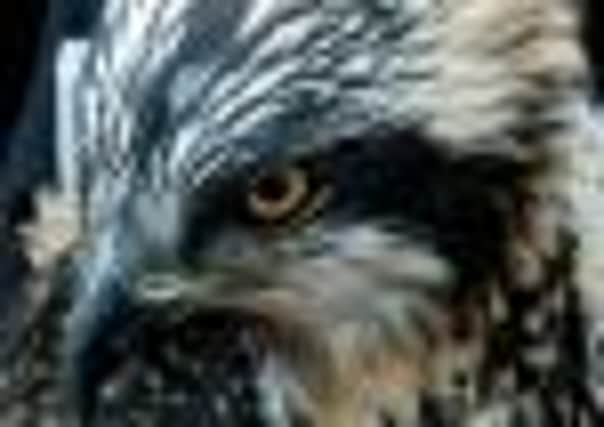Caledonia the osprey living high life in Seville


For first-year birds-of-prey, however, this is extremely rare. Young ospreys normally head to West Africa. But Caledonia’s decision to set up home in the urban Seville has resulted in her avoiding the same tragic fate of her sister, Alba, and other young ospreys which have migrated to Africa.
Richard Thaxton, the RSPB Scotland site manager at Loch Garten, said: “Caley has opted to stay in Spain, which we are thankful for as it has basically saved her life.
Advertisement
Hide AdAdvertisement
Hide Ad“We don’t really know what is happening in Senegal, but ospreys there are dying. Caley, however, is thriving in Seville.”
Caledonia and Alba were satellite-tagged after being born at Boat of Garten, near Aviemore, in May, daughters to long-standing visitor EJ.
The pair left Strathspey in August, and Alba flew into the history books with the fastest ever migration – and on her maiden flight.
The raptor flew 3,000miles – almost 5,000km – to West Africa in just two weeks. It is understood to be the fastest migration of any satellite-tagged European osprey.
Online audiences who had been following her journey on the internet had been left astounded. Meanwhile, sister Caley made her way to Seville, and hasn’t progressed any further since arriving in September.
Mr Thaxton said: “This is considered unusual for first year birds which, whilst certainly passing through Spain, have always been thought to continue further south to West Africa.
“Alba did exactly that, making a record-breaking migration last autumn, arriving in Senegal within two weeks of leaving Loch Garten.
“We are pleased our juvenile Caley has chosen to stay in Spain so far, because sadly Alba perished in late November in Senegal, as have other tracked ospreys over the years.
Advertisement
Hide AdAdvertisement
Hide Ad“We are hoping Spain perhaps offers a safer option, with richer pickings and less competition from other ospreys and other fish-eating birds down in the Tropics.”
Mr Thaxton said Alba, like other ospreys in Senegal, may have perished in fishing nets put on rivers by locals trying to catch fish.
He added: “We are unsure exactly what happened, but her tag just stopped transmitting. Locals have to fish for food, and ospreys will go where there is fish. It is most likely that is how Alba, and other tagged birds, have met their fate.
“So far Caley is alright. She is a townie bird and is attracting a lot of attention in Seville, as well as the thousands of followers online.
“What will be interesting is if she continues to stay put. We will just have to wait and see. There are canals and rivers there where she is feeding on carp and mullet, so she has a plentiful supply of food.”
Caledonia and Alba were born to EJ, who has been visiting Boat of Garten for over a decade. There is doubt as to who the father is, as there were two adult males visiting her nest during the breeding season.
The young ospreys were named by local school children. Caledonia and Alba were once the Roman and Gaelic names for Scotland.
The first chick Caledonia hatched on 17 May, and Alba followed a day later.
Advertisement
Hide AdAdvertisement
Hide AdOnce widespread, ospreys became extinct in Scotland in 1916, in 1954 a pair nested at Loch Garten. Since 1959, ospreys have arrived every year – raising more than 80 young.
More than two million people have visited RSPB Scotland’s Loch Garten Osprey Centre over fifty years, including almost 36,000 last year.
Caledonia is not expected to return to Scotland until either next year or 2015, when she will hopefully start breeding.